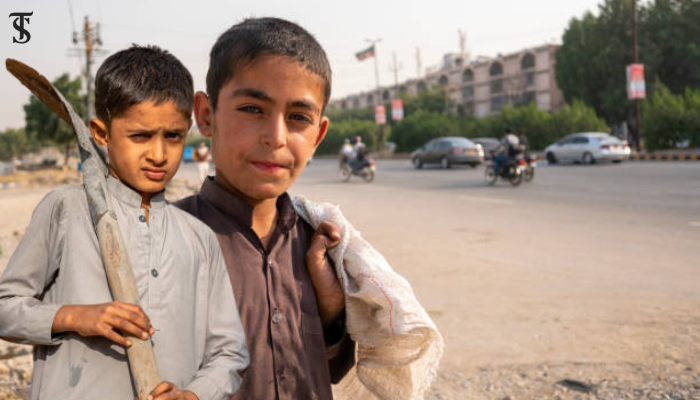Out-of-School Children: A National Challenge Demanding Local Solutions

- Alarming Statistics: Approximately 36% (25.3 million) of children aged 5-16 in Pakistan are out of school, with girls constituting 53% of this population. Many have never been enrolled, reflecting deep systemic and social barriers.
- Ineffective Reforms: Despite increased spending and reforms post-18th Amendment, poor learning outcomes persist due to misaligned priorities, centralized planning, weak accountability, and political interference.
- Urgent Solutions Needed: The crisis demands localized, community-driven, and data-informed strategies to overcome barriers, alongside bold government action to ensure equitable access and improved education quality.
Education is often described as the great equalizer—a pathway not just to personal development but to improved quality of life and the realization of one’s potential. In Pakistan, with nearly 67% of its population below the age of 30, this promise remains unfulfilled for millions of children, despite the constitutional guarantee of “free and compulsory” education under article 25-A. Yet, for many children, this promise remains out of reach, highlighting the stark gap between aspiration and reality. Yousaf, a 12-year-old waiter in a Quetta cafe in Islamabad, dropped out of school in the second grade and never returned. At an age when he should be in the classroom, Yousaf explains his reluctance to return to school, citing the need to work and support his family financially. Unable to afford the uniform and notebooks, his education has come to a halt.
Building on this, The Pak Alliance for Maths and Science (PAMS) recently published a report titled “The Missing Third of Pakistan,” which is a tehsil-wise analysis of out-of-school children in Pakistan. This research study is based on the 2023 Population and Housing Census, released earlier this year.
The report provides a detailed tehsil-wise analysis of out-of-school children (OOSC), revealing disparities across provinces and districts. This valuable statistical tool serves as a resource for policymakers, educational experts, and development practitioners to enhance both access to and the quality of education. Pakistan has a total of 71 million children between the age brackets of 5 and 16, of which approximately 36 percent—or 25.3 million—are not attending schools. Girls constitute 53% of the out-of-school population, compared to 47% for boys, underscoring the gender disparities in educational access.
The study further reveals that 51% of children aged five to nine years are currently out of school. This troubling figure constitutes nearly 45% of all children between the ages of five and 16, amounting to 32 million out of a total of 72 million. More concerning is the breakdown of out-of-school children: 21 percent of those who have dropped out, 79 percent of them have never been able to attend or enroll in a school, according to the report. This breakdown highlights the depth of the crisis, with younger children (5-9 years old) disproportionately affected, indicating a longer-term impact on their future.
The report highlights 45 tehsils contributing to Pakistan’s out-of-school children crises, of which 30 are in Punjab, 12 in Sindh, two in Khyber Pakhtunkhwa, and one in Balochistan. The report not only highlights a severe education deficit in the country but also a threat to future literacy rates. Despite the clarity of data, there has been no action on the ground that matches the scale of the challenge.
This year, the Prime Minister, Shehbaz Sharif, announced an educational emergency across the country on International Literacy Day, urging the enrollment of approximately 26 million children who are currently out of school with the aim to transform Pakistan into one of the most educated countries in the world.
Article 25-A—free and compulsory education—was added to the constitution through 18th Constitutional Amendment in 2010 devolving authority over education to the provinces. Fourteen years later, the prime minister declared an emergency to do what we had promised our children in the constitution. A recent research study by Rafi Ullah Kakar (School Education in Post-18 Amendment Balochistan) reviews the trends in school education management and financing post-18th amendment and analyzes why increased spending and reforms have not led to proportionate improvements in education.
His analysis reveals that despite increased spending and reform efforts, the outcomes have not matched expectations, leaving the education system in limbo. He suggests that learning outcomes are not improving because the various elements of the education system are not aligned around the goal of learning. The existing education system prioritizes school expansion over learning.
His analysis reveals that the effectiveness of well-intended reforms has been undermined by centralized, politically motivated, discretionary, and outdated planning and management practices, coupled with weak accountability mechanisms throughout the education delivery chain. This study also reveals that elite interests are aligned neither with the goal of learning nor access. They are aligned more with patronage politics and short-term political gains.
The cited statistics suggest that the education system has failed to provide access to education and ensure the quality of education because it has not been able to respond to children’s social circumstances and needs despite the government’s promises to improve education. Access to education suffers from multiple barriers such as economic factors, cultural barriers, and inadequate infrastructure. Girls are especially more vulnerable to cultural norms, further restricting their educational opportunities.
This dismal condition of education in Pakistan is not unexpected, given that educationists, researchers, academics, civil society representatives, teachers, parents, and children who have been talking of this neglect for years have not been responded to. Every education policy in the past (starting with the First National Education Conference in 1947) had aspirations to universalize education, but we are yet to universalize education. The current situation is the result of the choices that we have made and are still making.
The Pak Alliance for Maths and Science report offers a starting point to federal and provincial school education departments to devise customized pathways to address the challenge of out-of-school children in each district and tehsil. Without addressing the fundamental issues behind the high OOSC rates, reliance on traditional measures like enrollment drives may only reinforce the cycle of education exclusion. Therefore, innovative, community-driven approaches are crucial for breaking this cycle and ensuring educational inclusivity.
To address the education crisis effectively, it is essential to recognize that each district and tehsil operates within unique local dynamics. A one-size-fits-all approach will no longer suffice. We must adopt a child-centred framework tailored to the specific needs and circumstances of our children, ensuring that no child is left behind.
This urgent crisis demands immediate and collective action. The government must adopt bold, data-driven strategies and ensure their implementation with transparency and accountability. Meanwhile, empowering local communities to identify and address barriers actively can create sustainable, grassroots solutions. Every child deserves access to and the quality of education, and it is imperative for both policymakers and communities to act decisively now to secure a brighter, more equitable future for Pakistan.
Muhammad Majid Ali
The author holds an M.Phil. degree from Quaid-I-Azam University, Islamabad, and is currently working in the development sector.





